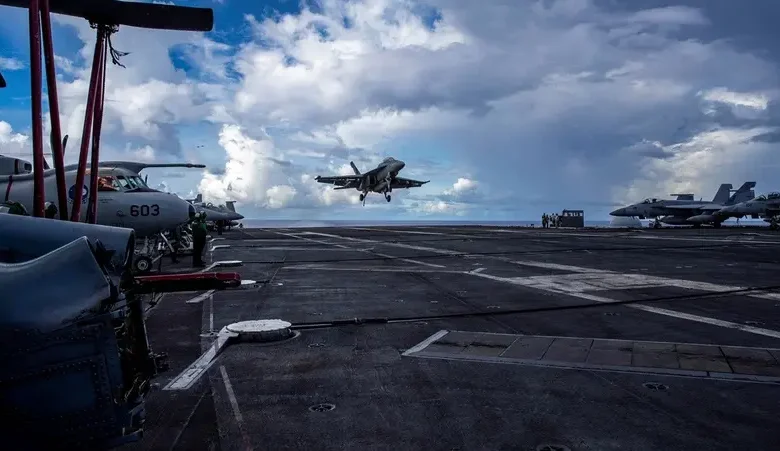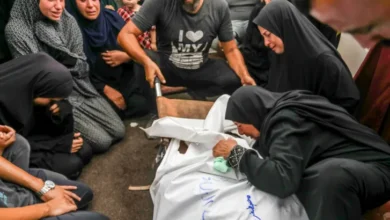USS Abe Lincoln arrives in Middle East, making it two aircraft carriers

The USS Abraham Lincoln has arrived in the Middle East after orders from the US secretary of defense to accelerate its transit from the Indo-Pacific, a source familiar with the operation said.
Defense Secretary Lloyd Austin had ordered the Lincoln aircraft carrier and its strike group to replace the USS Theodore Roosevelt Carrier Strike Group to maintain a strike group presence in the region.
The Roosevelt will remain in the region for a short period of time, giving the US two Nimitz-class nuclear-powered aircraft carriers in the Middle East, before its scheduled return to the United States.
The United States Central Command (CENTCOM) said the Lincoln, equipped with F-35C and F/A-18 Block III fighters, entered the area of responsibility (AOR) on Wednesday.
It is accompanied by Destroyer Squadron (DESRON) 21 and Carrier Air Wing (CVW) 9, CENTCOM said alongside a video posted on X.
The move comes amid an increase of US military assets and troops to the region following threats from Iran and its proxies to retaliate against Israel for assassinating top Hamas and Hezbollah figures in attacks in Tehran and Beirut.
The Pentagon says it is preparing for a wide variety of possibilities during a tense period in the region. “I understand the focus on this moment in time, but we in the [Pentagon] are a planning organization,” Pentagon Press Secretary Maj. Gen. Pat Ryder told reporters on Tuesday. “And in addition to being ready for now, we’re going to be ready for that wide variety of contingencies of what may come. To do that, you have to have capability and you have to have capacity. And so, that’s exactly what we’ve done and that’s exactly what we’d be prepared to do going ahead into the future.”
Austin has also ordered the USS Georgia, a nuclear-powered submarine, which has been in the Mediterranean Sea to deploy to the CENTCOM AOR. It is still in transit, according to the Pentagon.
Among the other moves to bolster force posture in the Middle East, the US military has shifted destroyers from the Gulf of Oman to the Red Sea.
Additional fighter jets along with additional ballistic missile defense-capable cruisers and more destroyers to Europe and the Middle East have also come in response to the recent threats.
In contrast to April’s Iranian retaliation against Israel for a deadly strike against diplomatic facilities in Syria, Tehran has done little to telegraph the timing or type of its anticipated retaliation. It is also unclear if the so-called ‘axis of resistance’ will carry out a coordinated operation or conduct separate responses.
Lebanon’s Hezbollah has vowed to strike at the heart of Israel in response to the assassination of its top military commander, Fuad Shukr. The group has yet to do so.
Iran said it would retaliate against Israel over the killing of a top Hamas political figure, Ismail Haniyeh, who was in Tehran for a ceremony to inaugurate the new Iranian president. They, too, have yet to respond.
Separately, the top US military general spoke to his Lebanese counterpart on Wednesday about current tensions along the Israeli-Lebanese border.
Chairman of the Joint Chiefs of Staff Gen. CQ Brown expressed the need to avoid further escalation in the region in coordination with allies and partners, Joint Staff Spokesman Capt. Jereal Dorsey said. “The US and Lebanon share a strong commitment to pursuing durable and sustainable security and stability in the Middle East region,” Dorsey added.










